The beers of De Sint-Sixtus Abdij van Westvleteren, usually referred to as Trappist Westvleteren for the last couple of decades, are among the most highly coveted in the world. The Westvleteren beers-which currently number three-are Blond, 8, and 12. These are Belgian Trappist brews of a very high quality, that I am very familiar with.

The Abbey of Sint-Sixtus is located in far West Flanders, not far from the hop fields of Poperinge and the World War I memorials of Ieper. It is an area steeped in history and tradition, with flat lands and friendly people.
The first record of monastic life in the area of the present-day abbey dates to the early ninth century. It is probable that an abbey, St. Bertinus, was built not far from the present abbey around A.D. 806. Later, nuns lived near the site from at least as early as 1260, at the house of Sint-Sixtus of Westvleteren. Records indicate they were gone by 1355.

In 1630, the lands where the present abbey stands were given to Birgittan monks, who lived there until 1784. When they were forced to leave, the buildings were demolished. Trappist monks first came from the Catsberg monastery in nearby France to inhabit the site in 1831. Later, monks from Sint-Sixtus founded Abbaye de Scourmont (Chimay) in 1850. Also, some of the monks went to America from 1858 on and founded the present-day St. Joseph’s Abbey in Spencer, Mass.
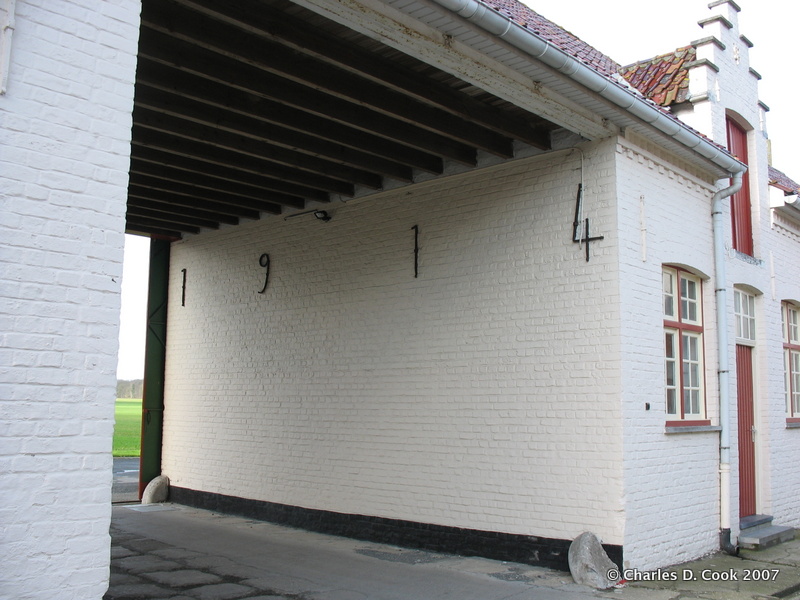
The abbey was never occupied by the Germans in WWI. All of the other Belgian Trappist abbeys with breweries were occupied. Over 400,000 allied soldiers lived and were cared for in the Westvleteren area during that time, at the abbey hospital and grounds.

WWII was tough on the area and on the abbey; very little brewing occurred, and the roads and buildings fell into disrepair. After the war, brewing continued, but on a smaller scale than before. The first record of brewing by the Trappists at Westvleteren dates to 1839. In 1931, the monks began selling beer to the general public; before then, it was only available to guests and friends of the abbey. The first beers offered were the 4, 6 and 8 degree brews. A 12 degree beer was soon created. At that point the beer was 12% abv. However, the beer was difficult to brew, since the high alcohol level often killed the yeasts. After WWII it was decided to reduce the abv to 11% so as to lessen the difficulty of brewing it.


The beers of today are the Blond (green cap, 5.8% abv), Acht/8 (blue cap, 8%) and Twaalf/12 (yellow cap, 10.2%). The 8 is no longer referred to as “Extra,” nor is the 12 referred to as “Abt.” The 4 degree Dubbel, formerly the monks’ table beer, and the dark 6 (6.2%) were both canceled when the new Blond was introduced in 1999.
The Blond was formulated and released on the occasion of the opening of the new In de Vrede cafe (the tasting cafe owned by the monks, across the street, Donkerstraat, from the abbey) in 1999. It replaced the old dark Westvleteren Pater 6, and was created to offer a “lighter” beer to cyclists and others who might be driving or prefer a blond beer. It has been a great success. At 5.8% alcohol by volume (abv) it is certainly not a light beer, but it also does not weigh in at the 8% alcohol of the Westvleteren 8, nor the 10.2% abv of the 12.
The dark, strong 8 was introduced in the 1930’s, and is a medium- to dark brown–colored beer with notes of chocolate, licorice and sweet malt. It pours with a fine head and leaves a substantial “Belgian lace” in the glass. Primary fermentation takes four to seven days at 82 degrees Fahrenheit (the same as the 12). Lagering time is four to eight weeks.
The 12 is one of the world’s most sought-after brews, and dates also from the 1930’s. The beer is medium to dark brown in color and pours with a fine tan head. Notes of raisins, fruits, brown sugar and caramel are present. Mouthfeel is creamy and elegant, with noticeable alcohol. The 12 uses the same Westmalle yeast for bottle-conditioning as for primary fermentation, as with the Blond and 8. The reason that the 12 used to be 11% abv and is now 10.2% is that the Westmalle yeast is more difficult to brew to high alcohols than the Westvleteren yeast of years ago.
The Blond, 8 and 12 all undergo a period of warm conditioning at 79 degrees Fahrenheit after bottling: eight days for the Blond, 10 days for the 8, and 10–12 days for the 12.


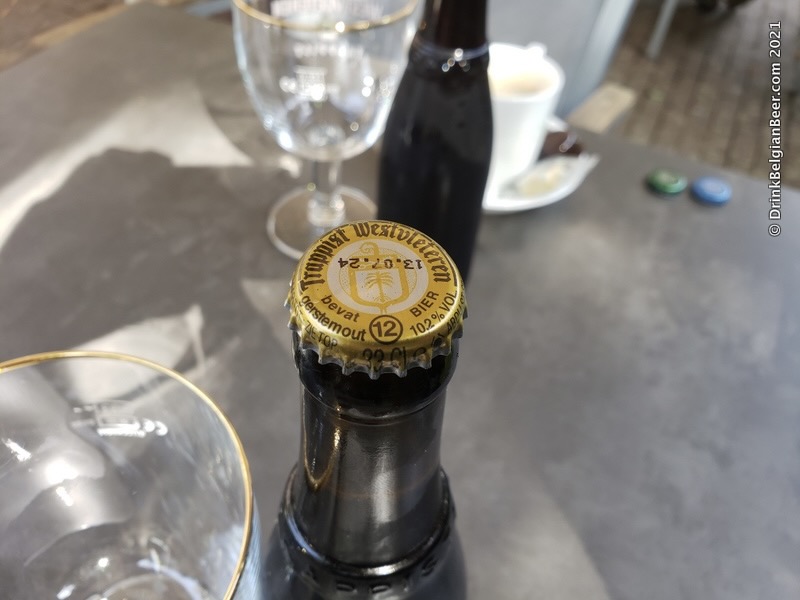
The Westvleteren beers have had no labels since not long after World War II. All of the legally required information about the brews was printed on their bottle caps. Beer lovers visiting Belgium and other places fortunate enough to have obtained some bottles have recognized the label-less brews as a mark of quality for many decades.

I first encountered Westvleteren 12, formerly known as Abt, at a cafe in Bruges, ‘t Brugs Beertje, in 1994. That same cafe also stocked the (also fantastic) St. Bernardus Abt, so I was able to compare two Belgian dark strong ales that evening, and start to develop what would become a lifelong affinity for these brews.
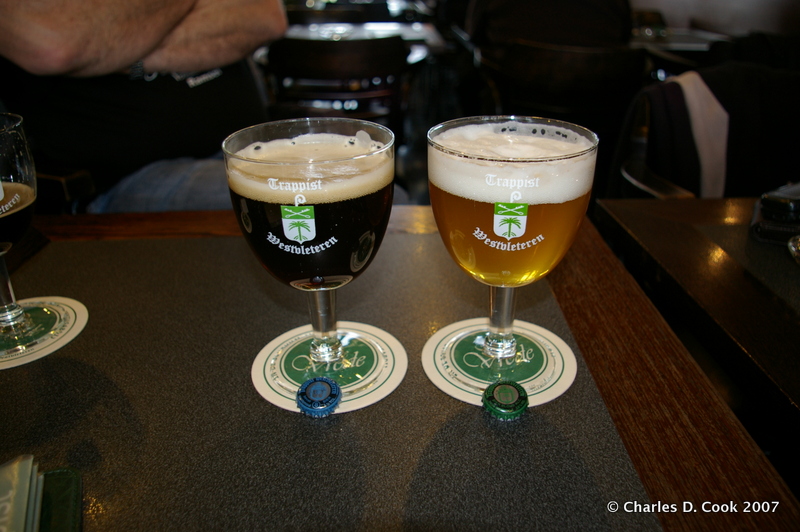
I later visited the brewery in 2004, 2005, 2007, and 2009. This included two visits to the old brewery at Westvleteren, which was quite fascinating to see.

Westvleteren 8 and 12 can both age very well, sometimes for upwards of 30 years. I was able to taste vintages of the Abt (12) at Cafe Kulminator in Antwerp going back as early as 1975, in the early 2000’s. But the oldest Westvleteren Abt that I ever enjoyed was during a visit to Brouwerij Westvleteren in 2007, when Brother Joris, who was the monk in charge of the brewery at the time, opened a 1969 bottling. It was very complex and port like, and even better than the few bottles of 1975 I had enjoyed previously.
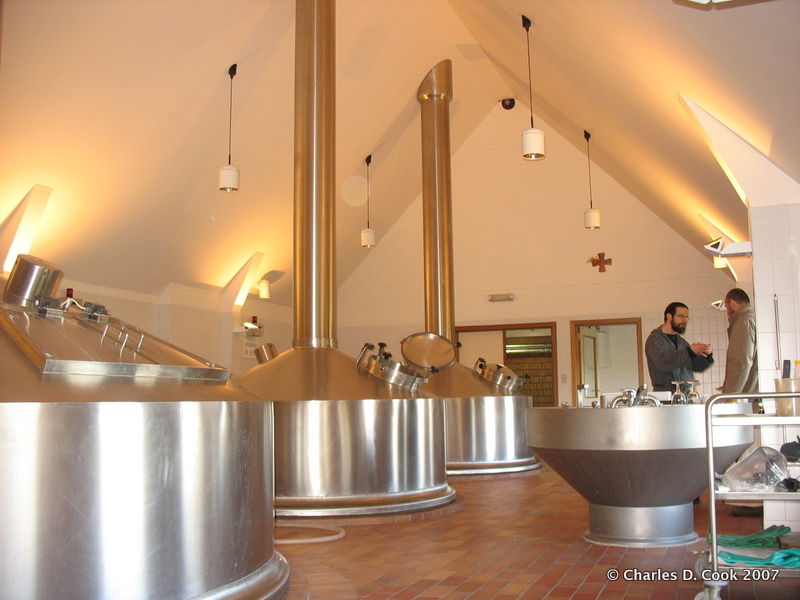
So, suffice it to say that the 8 and 12 can age very well. Having no label has been a tradition for 75 years, and that will soon change. A press release on August 12, 2022, announced that Westvleteren will be adding labels to its beers, effective immediately.
But, does having a label really matter? I would say not. It in no way effects the actual beer inside the bottle. (Note that Westvleteren has never been available on draft. These have always been bottle-conditioned beers, and probably always will be.)
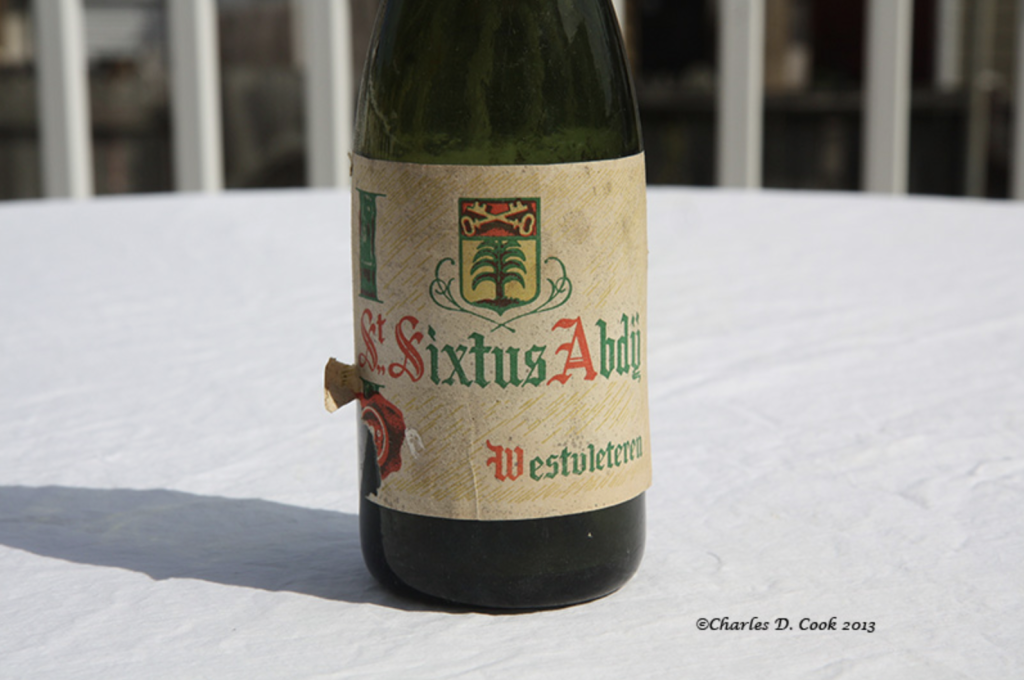
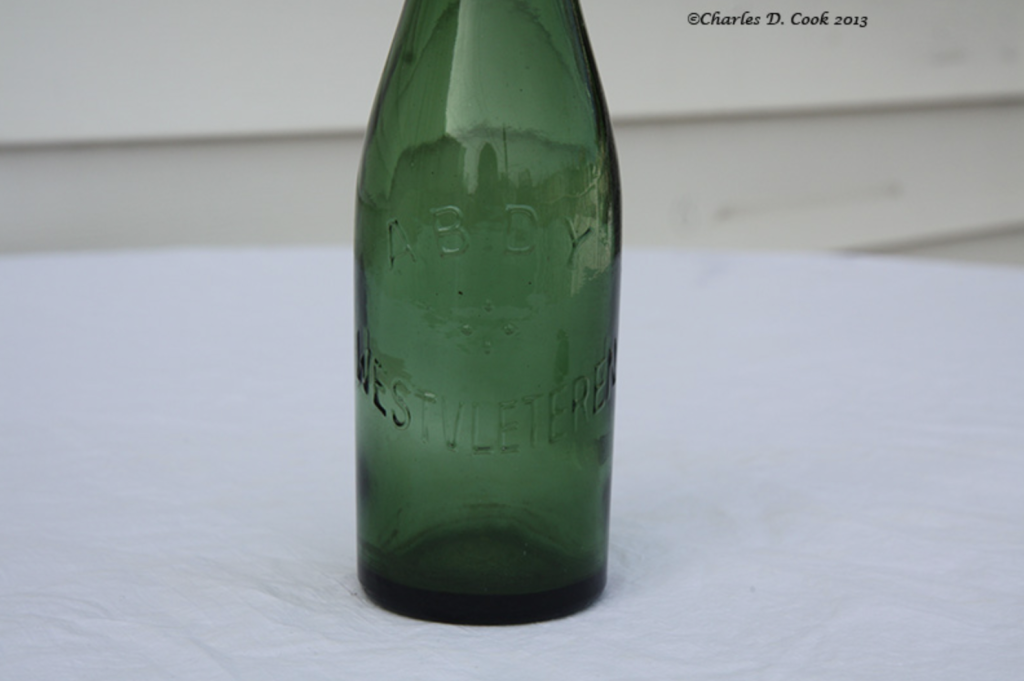
In any case, let’s have a look at the press release from the Abbey of Sint-Sixtus and Trappist Westvleteren about adding labels:
“Trappist Westvleteren is the only Belgian beer in a labelless bottle. For decades, all legally required information about the beer and the producer was mentioned on the bottle caps. That is now changing. From tomorrow, bottles of Trappist Westvleteren will carry a label again. The end of an era spanning more than 75 years.
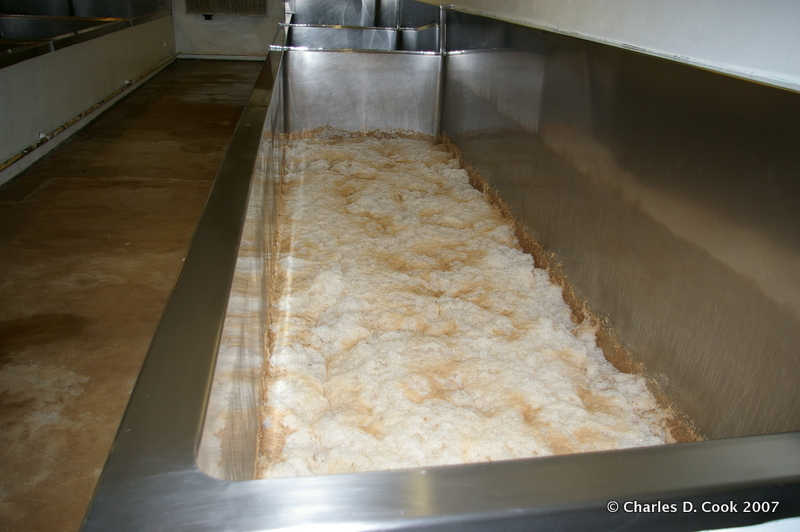



“Basically, Trappist Westvleteren with a label is nothing new. In the Interwar period the Abbey of Saint Sixtus already sold labelled beer bottles. Shortly after the Second World War, the then Trappist community in Westvleteren decided that part of the production would be licensed to a neighbouring laic brewery. Those bottles also carried a label”, explains Brother Godfried, prior of Saint Sixtus Abbey. “However, from that moment on labels were no longer glued on the Trappist beer bottles that were produced within the abbey walls. Even when the monks retook the entire Trappist Westvleteren production in their own hands in 1992, they made sure that all necessary information was stated on the bottle cap. Thus, after more than 75 years, labelled Trappist beers will again be sold at the abbey gate.”
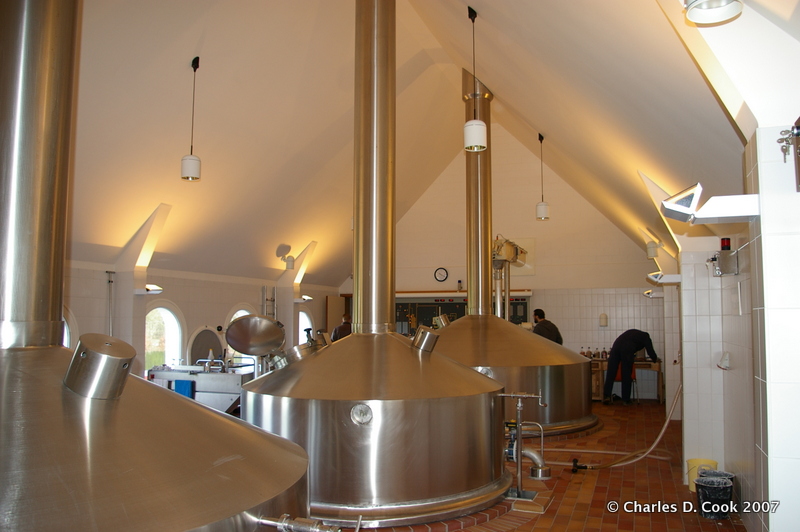

Brother Godfried: “Nowadays, there is a general trend in the food industry to inform consumers as fully as possible. Although there is no legal obligation for beer producers to provide the full list of ingredients and nutritional values, we have nevertheless decided to do so and to reintroduce labels. After all, it was impossible to put all that information on the bottle cap.”


The monks opted for a unique label design that is quite close to the familiar look & feel. “The labels represent stylised images of the bottle caps. There are three label versions, one for each of the three Trappist beers from Westvleteren Abbey. The colours of the cockades correspond to the well-known colours of the bottle caps, green for the Blond, blue for the 8 and yellow for the 12”, says Brother Godfried. “We made sure that the traditional image of the beers in the crate was affected as little as possible. For example, the labels are placed in such a way that they cannot be seen when the bottles are in the crate. Only the classic, dark bottles with the distinctive ring with the relief inscription ‘Trappistenbier’ are visible.”



In addition to the name of the beer and the legally required information, symbols and allergens, the labels also contain the complete list of ingredients in three languages, the energy values, the logo with the coat of arms of the Saint Sixtus Abbey and a QR code that refers to a webpage with the complete nutritional table.
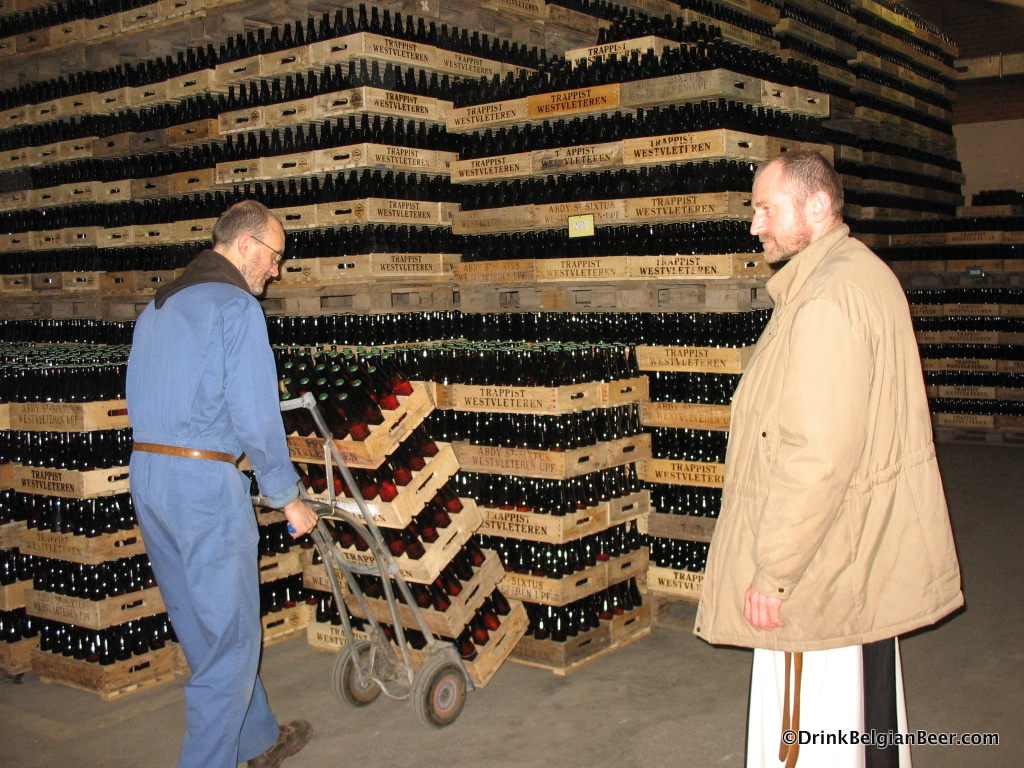
The project started at the end of 2019. The communication working group of the Abbey, assisted by companies Pigs in Space, Force3 and Eclips design, designed and developed the labels. Various designs were reviewed, reworked, and fine-tuned. In recent months, technicians of Schuilenburg and Van Uitert have installed a modern Langguth labelling system in the bottling plant. Interlabel printed the labels.
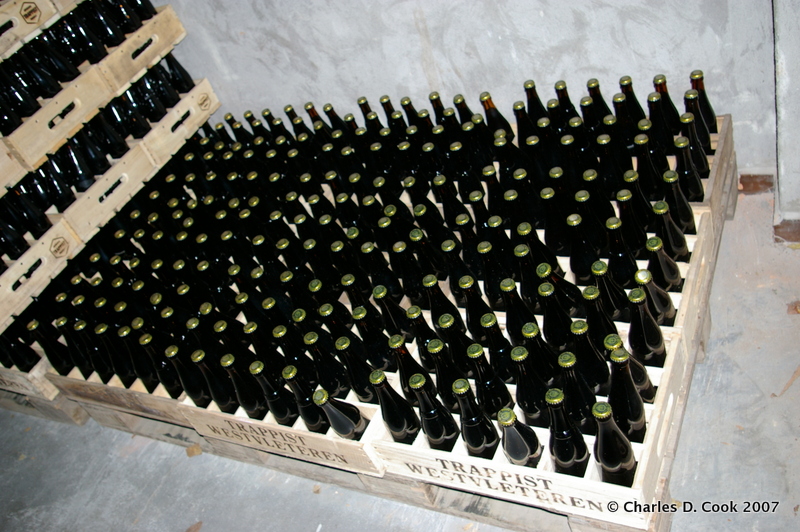
From tomorrow, the first crates with labelled bottles of both Westvleteren Blond, 8 and 12 will be put into circulation. The first labelled bottles will also soon be served at the visitor centre ‘In De Vrede’. The first six-packs and home-delivered crates with labelled bottles will be available in a few weeks’ time.
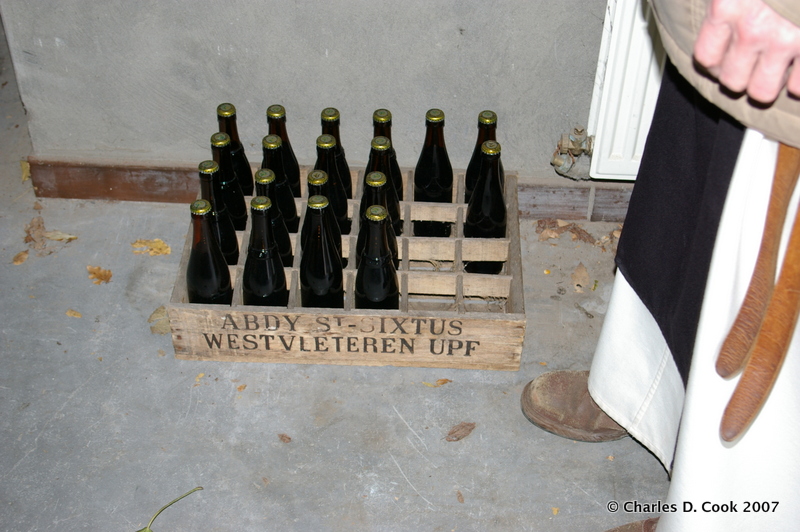
For the time being, the familiar crown caps are still put on the bottles. Once the current stock of metal caps is used up, they will be replaced by bottle caps with a new, simplified design that is fully in line with the labels.”
I like the new labels, as the front labels are, as stated above, a stylized image of the bottle caps. It will be a shame to see the old bottle caps go away, though.


The real bottom line is this: Westvleteren Blond, 8, and 12 are all great beers, among the best of the Trappist brews. A visit to the In de Vrede tasting cafe, now referred to as a Visitor’s Center by the monks, is a life enhancing experience for any Belgian beer lover. The monks own the cafe, and have secular workers manage/operate it. Visitors can often purchase up to three 6 packs of Westvleteren 12 (with the Blond and 8 being available occasionally), along with great cheeses, chocolates, jams and preserves, glassware, clothing, and other Trappist products in the In de Vrede shop. Many of these products are from other Trappist monasteries, and are hard to find elsewhere.
If you are a fan of funky cheese, do not miss the Belval! It is produced by Trappist nuns at Abbaye de Belval in northern France, which is not so far from Westvleteren.
Opening hours and days: Note that In de Vrede is always closed on Fridays, and also will be closed from September 30 through October 9, 2022, for their annual holidays. The cafe opens at 10 am and usually closes by 8 pm. See their calendar here.
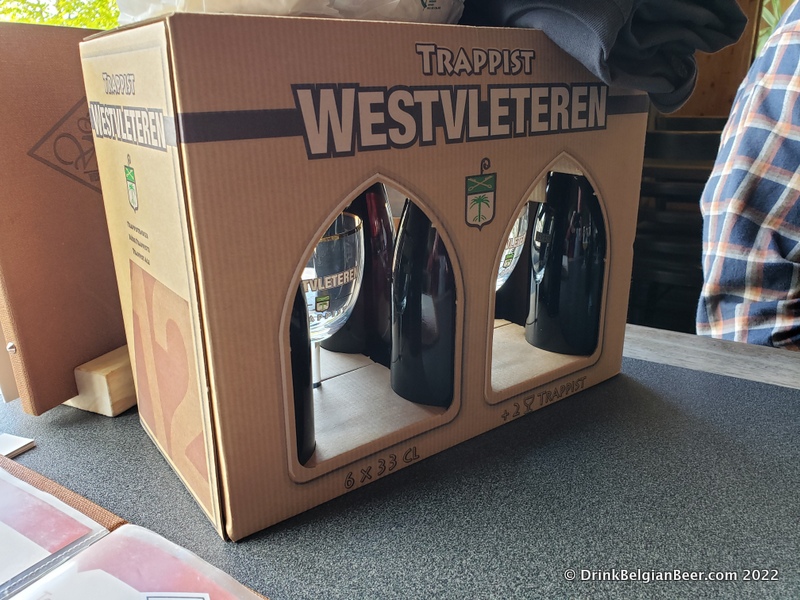

But the beer and Trappist products are far from the only draw: Cafe In de Vrede (which means “In the Peace”) also upped its food offerings several years ago. For many years, items such as soup, Croque Monsieur (a toasted ham and cheese sandwich) as well as bread, cheeses, and pates used to be the main offerings, along with some great desserts. Things have changed at Westvleteren and In de Vrede, and they now have a menu with more offerings than in the past, including several full entrees. These include a Black Angus rib eye steak with garlic butter, served with salad and frites; Spaghetti Bolognaise; and a stew of pork cheeks braised in Westvleteren 8, served with frites and a salad.








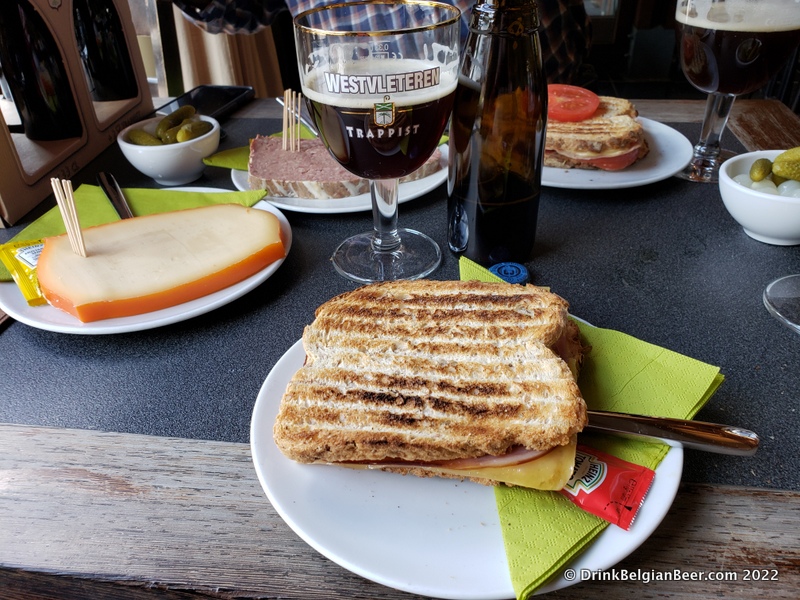

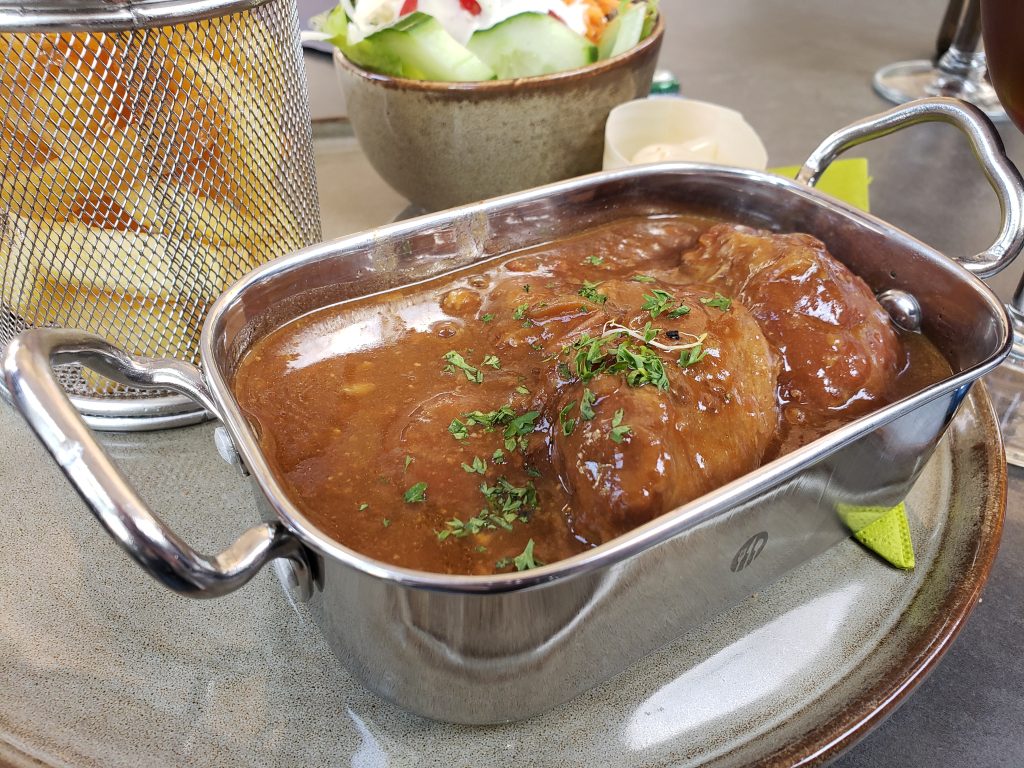
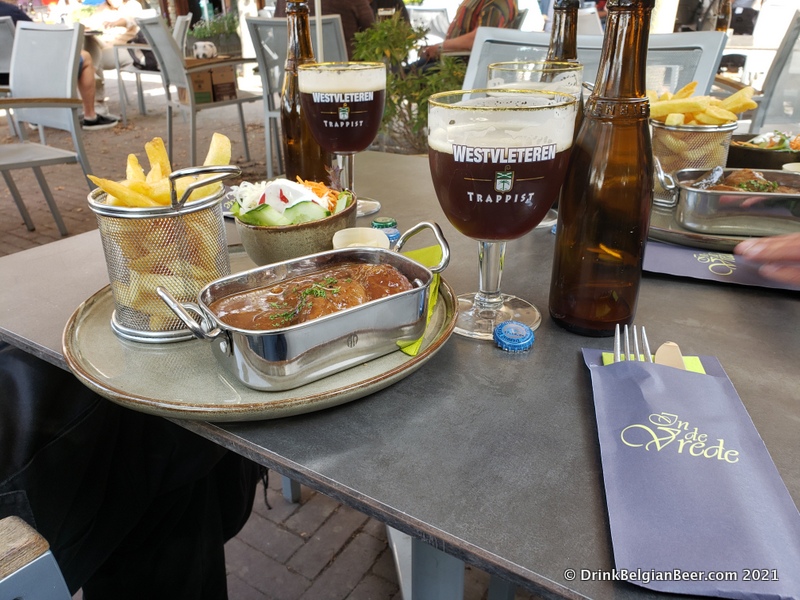
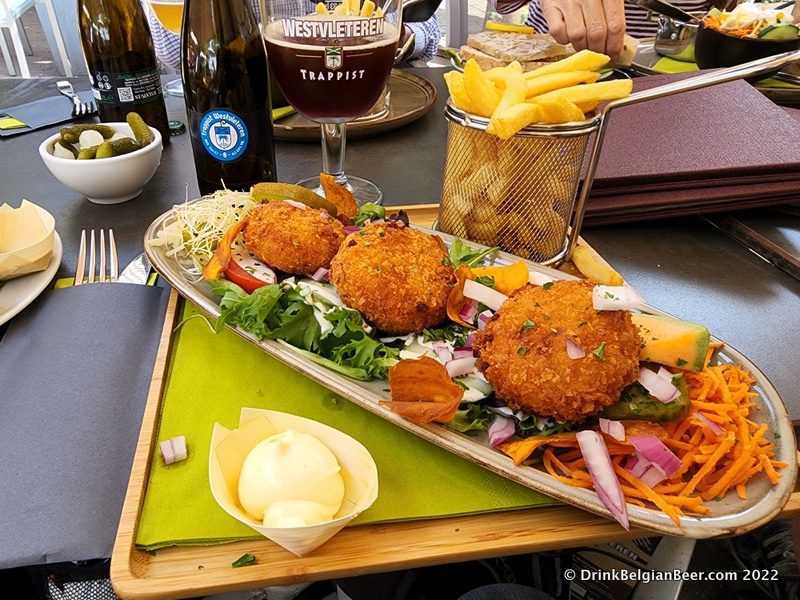
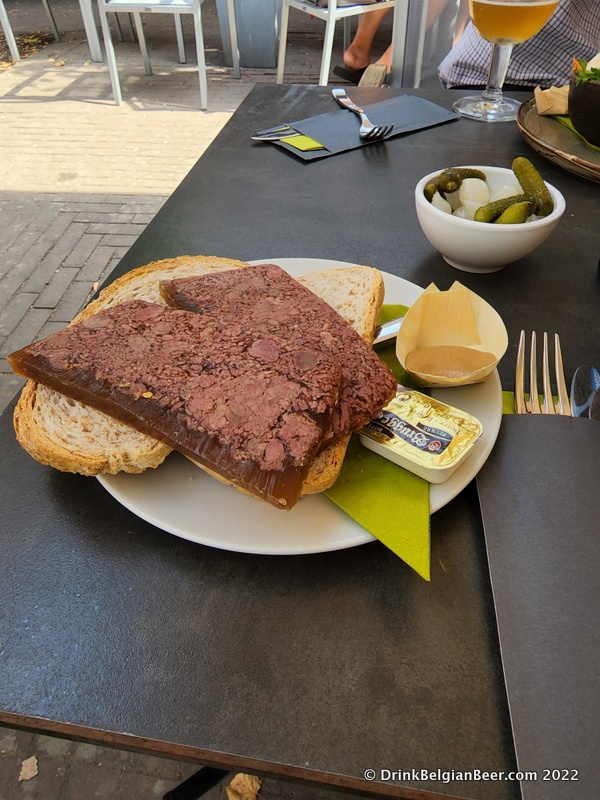




Note that inside Cafe In de Vrede is the “Het Claustrum” where you can have a virtual look inside the monastery, and learn about the lives of the monks. Because the monks live a reclusive life of prayer and silence, the abbey and brewery cannot be visited.
Let’s have a look around the abbey below.





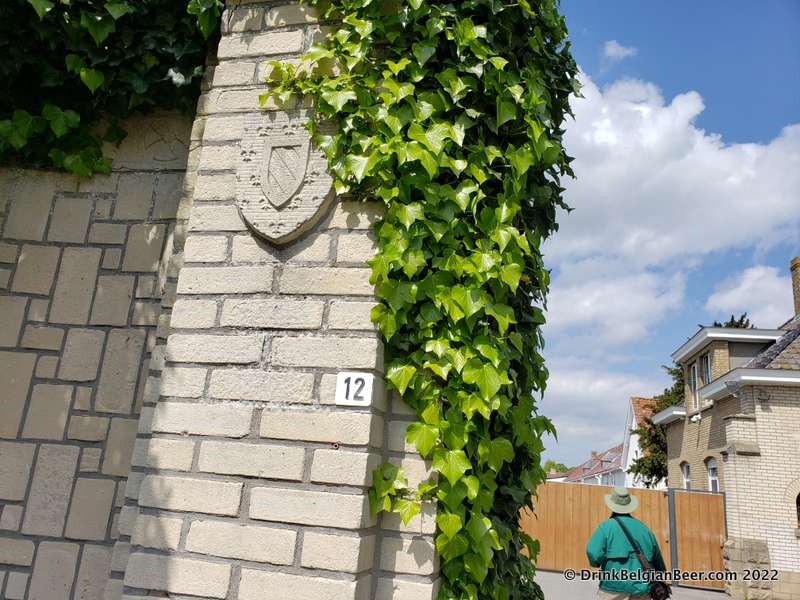
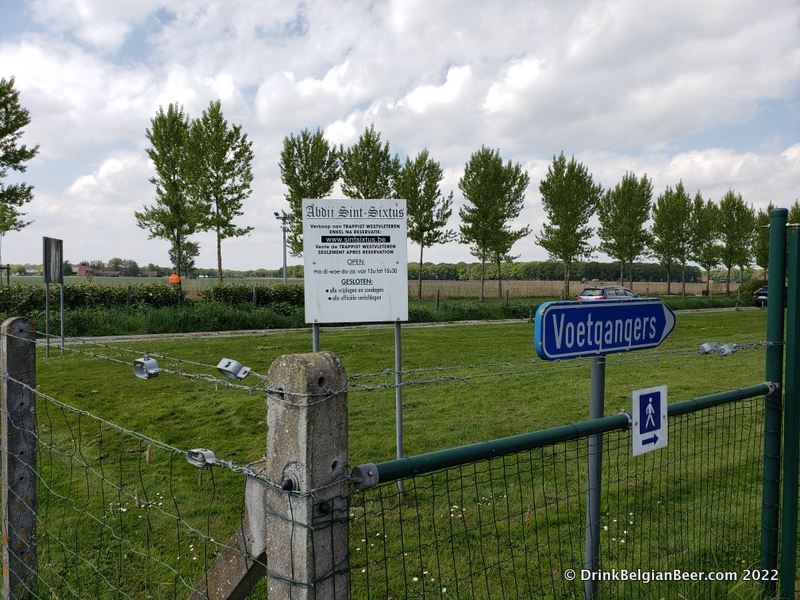

Note that Westvleteren is very difficult to get to with public transport, and in fact, it is almost impossible. Going with a friend who is a designated driver, or with a tour group, is often the best way to go.
A visit to the In de Vrede Cafe and Visitor’s Center in the shadow of the Sint-Sixtus Trappist Abbey is a modern-day pilgrimage for any serious lover of Belgian beer!
You will have a memorable eating and drinking experience there, and a walk around the normally quiet, peaceful Donkerstraat is good for the soul.
For information about tourism in Flanders, see here.
If you like this website, please like our Facebook page here
and our Instagram page here
and our Twitter page here

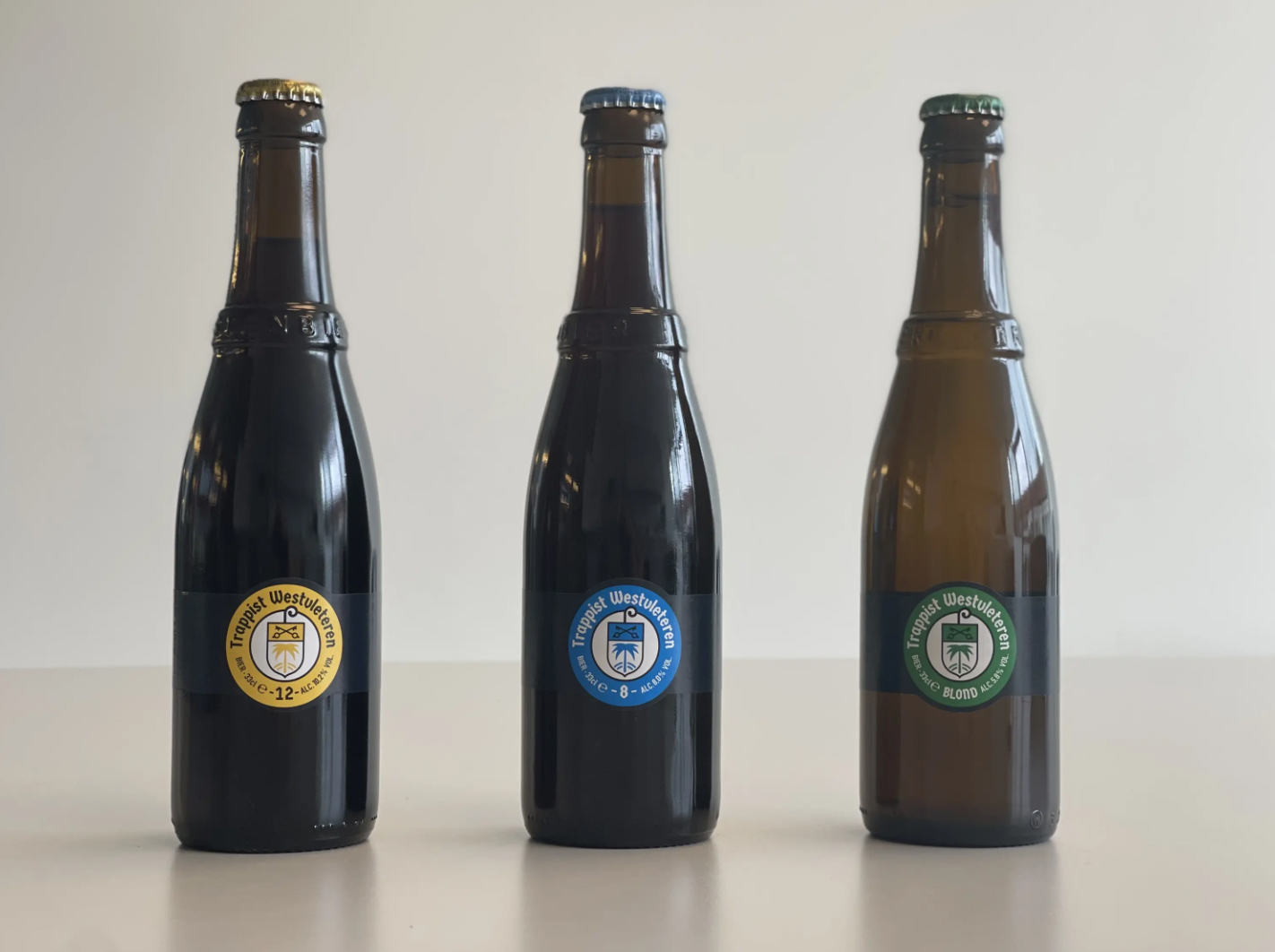
Leave a Reply